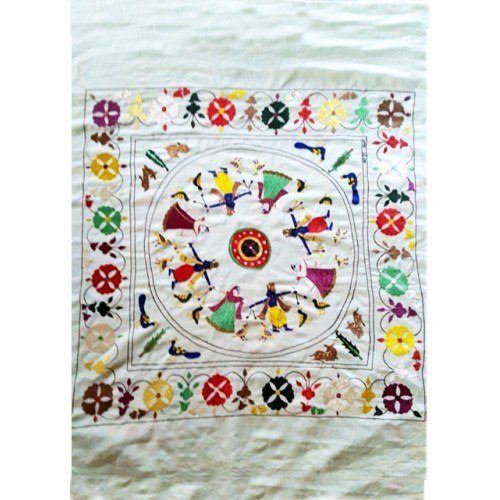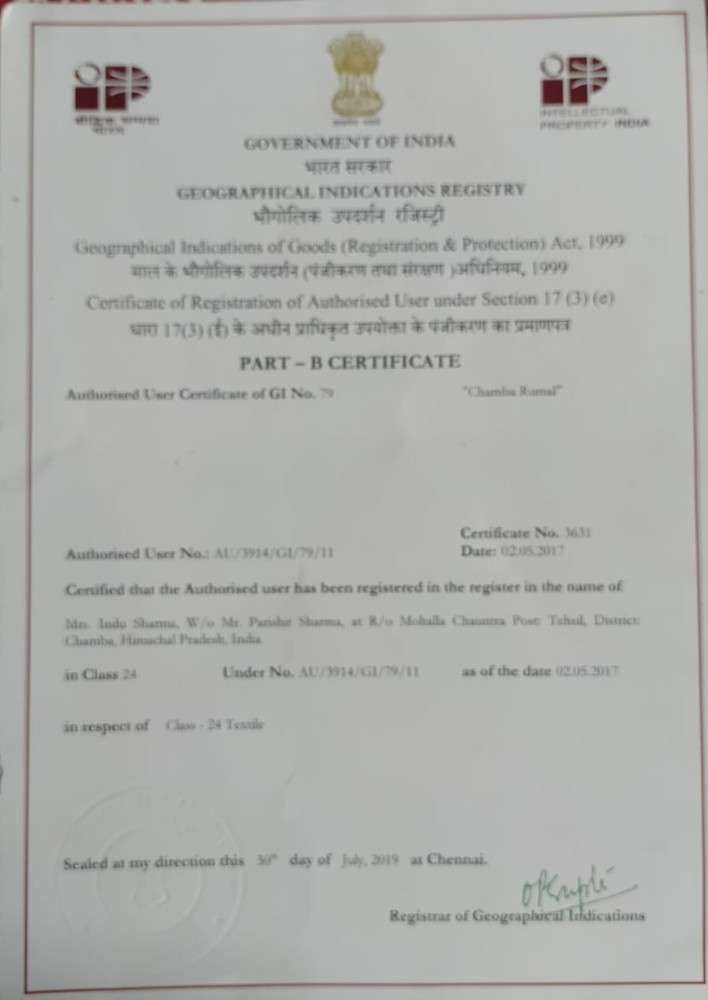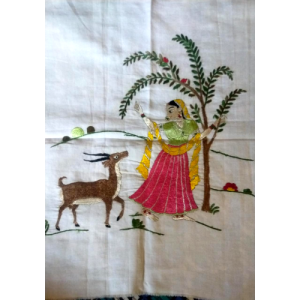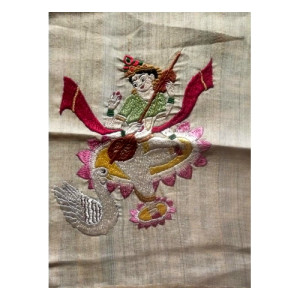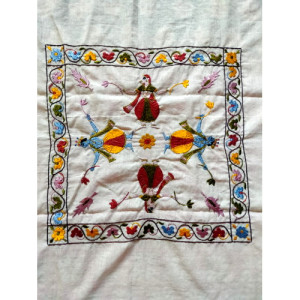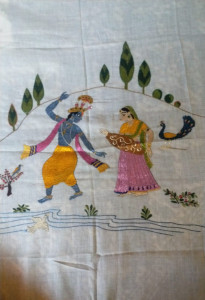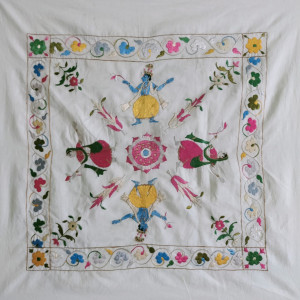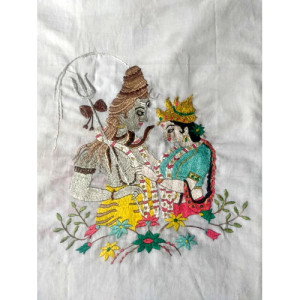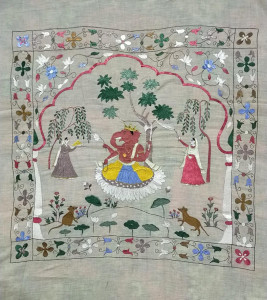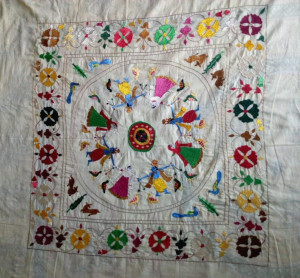Chamba Rumal Rass Mandal Silk Thread Embroidery By Indu Sharma
The fabric is light and sheer and provides a perfect base for the intricate embroidery. The cotton fabric is pre-washed and starched before the embroidery is started, which helps to create a smooth and even surface for the needlework. The embroidery is done with silk threads that are dyed using natural dyes to create vibrant colors that are characteristic of Chamba Rumal. The use of fine cotton fabric and natural silk threads is what gives Chamba Rumal its unique texture and appearance.
- GI Origin : Himachal Pradesh
- Colour : Multicolor
- Product Material 1: hand-spun cotton fabric known as mulmul or muslini
- Useful for : Decorative Purpose, Gifting Purpose, Table Top Decor, Interior Decoration
- Size :38” x 28”
- Weight : ~ 350Grams
Chamba Rumal was granted the Geographical Indication (GI) tag in 2007
The history of Chamba Rumal can be traced back to the 17th century when Raja Umed Singh of Chamba invited Kashmiri embroiderers to teach the craft to local women. Over time, the art form evolved to include local motifs and designs. The Chamba Rumals were traditionally used as coverings for offerings made to temples and as gifts for royalty and other important people. However, with the decline of the princely state of Chamba, the art form also declined. In the 1970s, efforts were made to revive the craft, and today, Chamba Rumal is recognized as a unique form of embroidery and is highly valued as a work of art. The Government of India has also recognized the importance of the craft and has provided support to the artisans in the form of training and marketing assistance.
Chamba Rumal is an exquisite form of embroidery that originated in the Chamba district of Himachal Pradesh, India. It is a form of needlework that involves the use of a single thread for the entire embroidery, which makes the design appear the same on both sides. The designs are usually inspired by nature, mythology, and history and feature intricate patterns and vibrant colors. Traditionally, Chamba Rumals were used as coverings for offerings made to temples, but today they are used as decorative pieces

 USD
USD INR - ₹
INR - ₹
 CAD - Can$
CAD - Can$
 EUR - €
EUR - €
 GBP - £
GBP - £
 SGD - S$
SGD - S$
 AUD - A$
AUD - A$
 MYR - (RM)
MYR - (RM)
